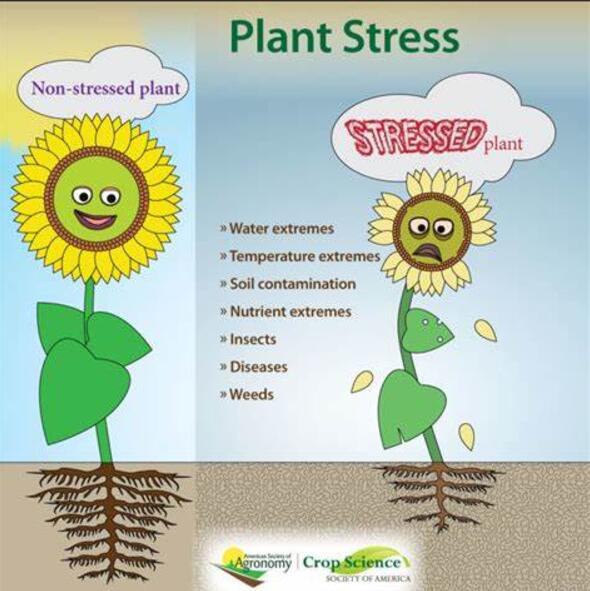Plant defense against insect herbivory: Flavonoid-mediated growth inhibition of Helicoverpa zea
IF 6.8
Q1 PLANT SCIENCES
引用次数: 0
Abstract
Plant biotic stressors, including insect damage to economically important crops, are on the rise because of climate change (Skendžić et al., 2021; Matzrafi, 2019; Hatfield et al., 2011). Corn earworm (CEW) Helicoverpa zea (Boddie) is one of the economically important insect pests of maize (Zea mays L.) and sorghum (Sorghum bicolor (L.) Moench). In this study, maize near-isogenic lines with high flavonoid content in silks, husks, and kernel pericarps were used to test against the survival of CEW larvae. Larvae feeding on high-flavonoid maize lines had increased mortality and reduced body weight. These larvae showed leakage of the midgut peritrophic matrix, indicating leaky-gut-like syndrome suggesting involvement of microbiome changes in the larval gut. Moreover, the expression of chitin formation and gut health-related genes was changed in the midgut of larvae consuming the flavonoid-rich husks. CEW herbivory caused high and localized accumulation of flavonols around the damaged husk area. Silks and husks of high flavonoid lines also had elevated levels of 3-deoxyanthocyanidins (3-DAs) and flavan-4-ols, which contributed to increased larval mortality. Feeding assays using an artificial diet supplemented with a sorghum 3-DAs-rich extract further confirmed the efficacy of these flavonoids in increasing larval mortality. Altogether, this study suggests a novel option for integrated pest management for CEW larvae.
求助全文
约1分钟内获得全文
求助全文
来源期刊

Plant Stress
PLANT SCIENCES-
CiteScore
5.20
自引率
8.00%
发文量
76
审稿时长
63 days
期刊介绍:
The journal Plant Stress deals with plant (or other photoautotrophs, such as algae, cyanobacteria and lichens) responses to abiotic and biotic stress factors that can result in limited growth and productivity. Such responses can be analyzed and described at a physiological, biochemical and molecular level. Experimental approaches/technologies aiming to improve growth and productivity with a potential for downstream validation under stress conditions will also be considered. Both fundamental and applied research manuscripts are welcome, provided that clear mechanistic hypotheses are made and descriptive approaches are avoided. In addition, high-quality review articles will also be considered, provided they follow a critical approach and stimulate thought for future research avenues.
Plant Stress welcomes high-quality manuscripts related (but not limited) to interactions between plants and:
Lack of water (drought) and excess (flooding),
Salinity stress,
Elevated temperature and/or low temperature (chilling and freezing),
Hypoxia and/or anoxia,
Mineral nutrient excess and/or deficiency,
Heavy metals and/or metalloids,
Plant priming (chemical, biological, physiological, nanomaterial, biostimulant) approaches for improved stress protection,
Viral, phytoplasma, bacterial and fungal plant-pathogen interactions.
The journal welcomes basic and applied research articles, as well as review articles and short communications. All submitted manuscripts will be subject to a thorough peer-reviewing process.
 求助内容:
求助内容: 应助结果提醒方式:
应助结果提醒方式:


